Harry Kane scored at Barcelona last season and a tactical trend has emerged
Barcelona have lost their latest two games and there is a Harry Kane-inspired tactical tweak that teams are using to create chances against them this season.
Budding strikers are often advised to pay attention to defensive lines and stay onside, but in the professional game there are forwards who deliberately occupy offside positions in order to score later on in attacking moves.
Why strikers are standing ‘offside’
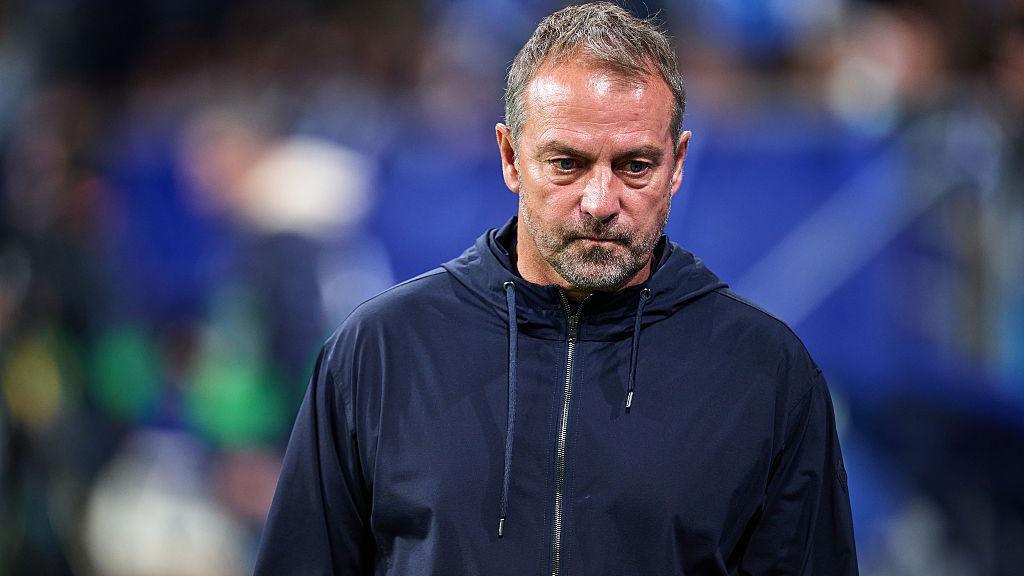
Barcelona’s Hansi Flick is known for his front-footed managerial style
PSG recently beat Barcelona in the Champions League as striker Goncalo Ramos scored a 90th-minute winner.
When discussing how the goal happened, Ramos said: “I think a lot about beating a high line. Against Barcelona, [there is] a video of Harry Kane, I think two years ago, and he did something like I did on the goal, and he scored.”
But what did he mean by this?
Interestingly, both Ramos and Kane were able to score against Barcelona’s high defensive line by initially waiting in an offside position, something defenders aren’t used to.
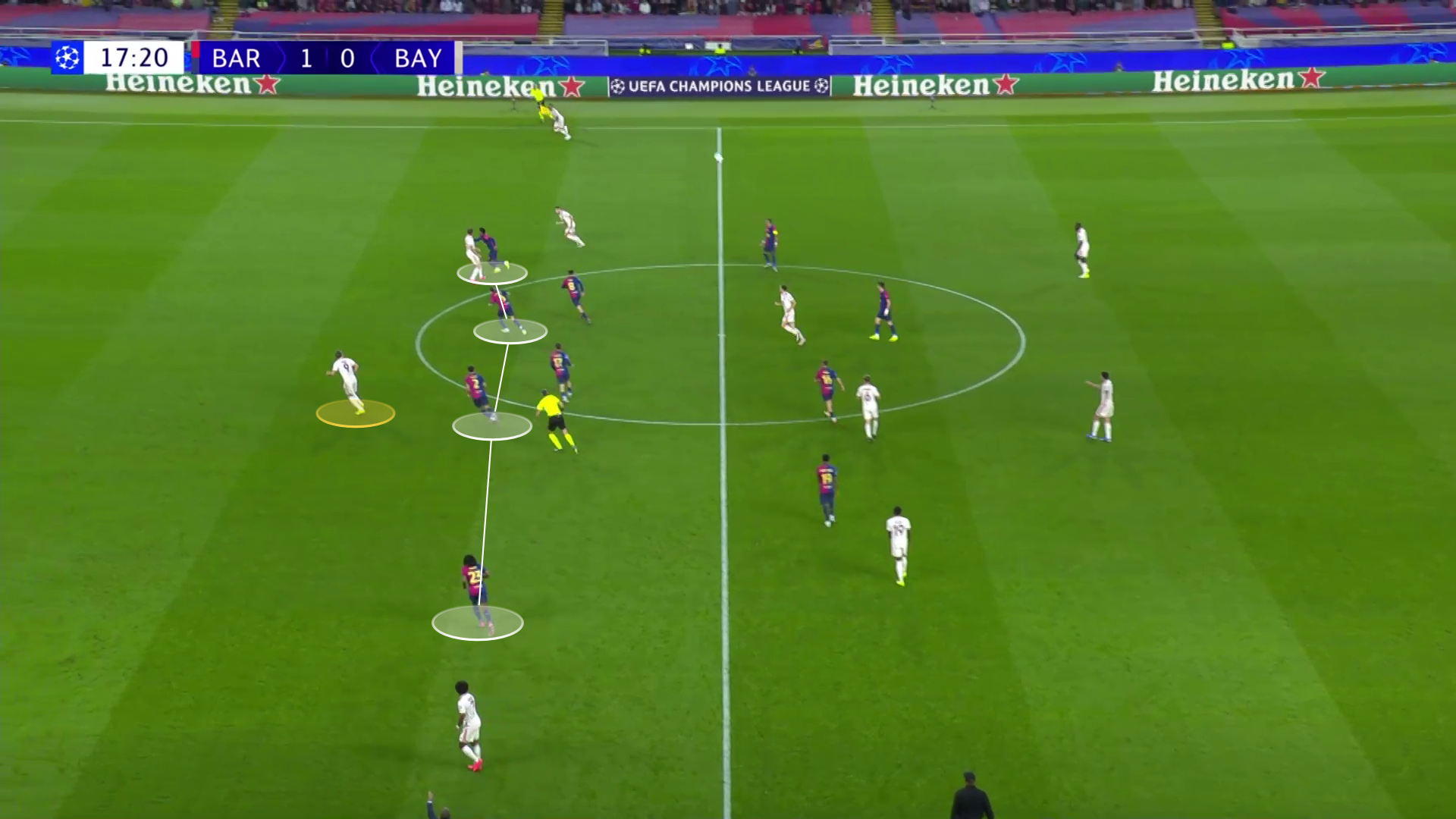
Bayern Munich striker Kane began behind Barcelona’s high defence in a move that eventually led to him scoring in last season’s Champions League game
Thomas Muller has previously spoken about attackers positioning themselves in this way.
Long-serving Bayern Munich forward Muller, who left at the end of last season to join Vancouver Whitecaps, said: “It is easier to defend a guy that comes to the ball because then the striker is in front of them. They can see and defend him.
“But when you have a guy that is [behind you]you always have to turn [but] you don’t want to give up your offside line.”
The unusual positioning disrupts central defenders and removes some of the tools they use to marshal their opposing striker.
Momentum prevents Barcelona getting back
Barcelona look to catch opponents offside and as a result the defenders face the ball, looking to step up the pitch.
PSG last week – and Bayern before them – had players facing Barcelona’s goal with their weight and momentum in the right direction, ready to run in behind.
This made it difficult for Barcelona’s defence to recover. Having to turn before accelerating again reduces how quickly they can get back to defend their goal.
This problem has been made worse with the strikers having a head start in their offside position. In the case of the Ramos and Kane goals, the wide players in PSG’s Achraf Hakimi and Bayern’s Serge Gnabry also had the pace to go beyond the Barcelona defence.
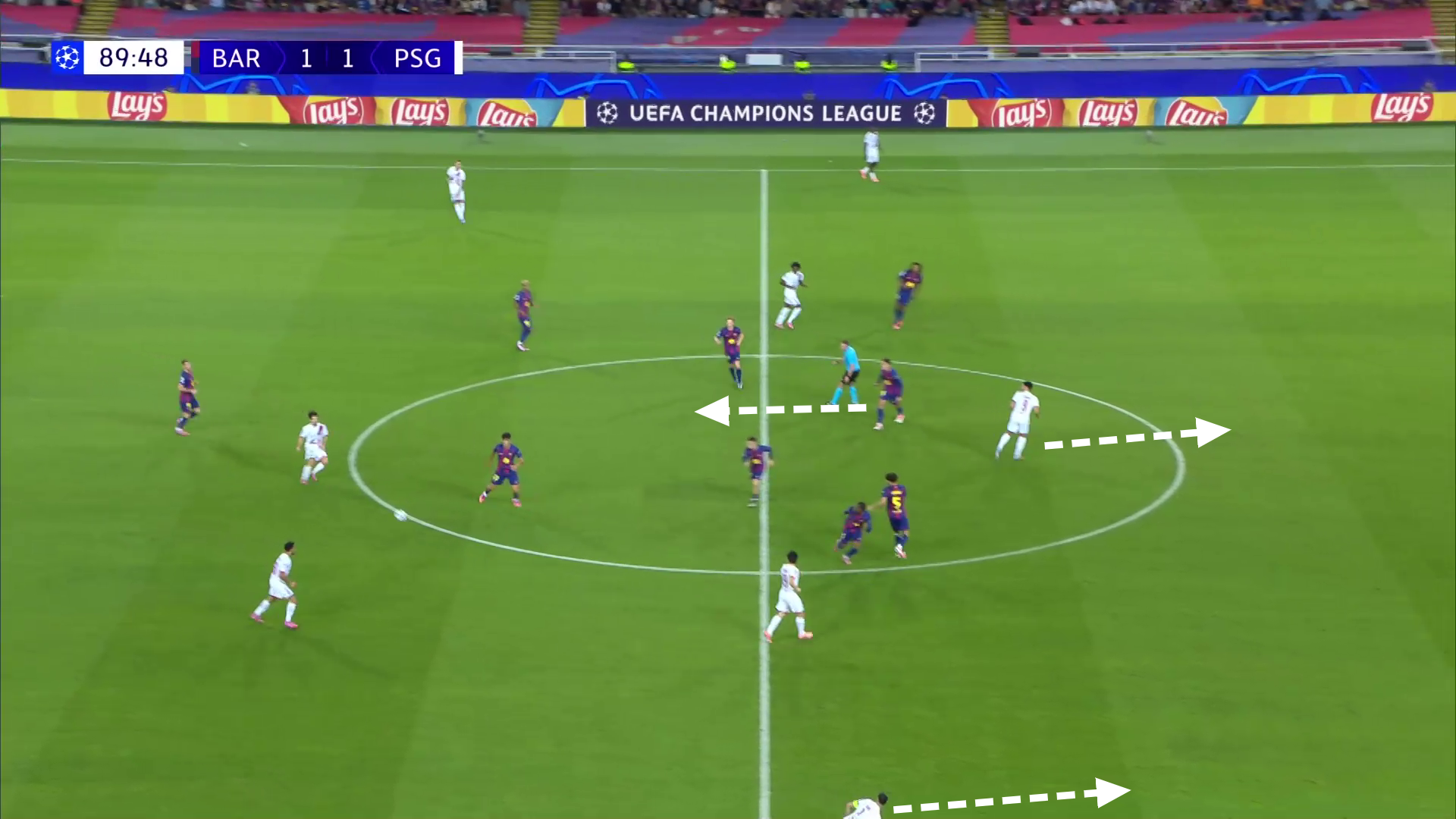
Barcelona’s defence try to step up forward while Ramos and Hakimi are positioned well to run in behind
In both examples, the ball was switched to a quicker wide player running in behind. Crucially, they were onside when the pass was played to them, while the comparatively slower striker caused uncertainty centrally, in an offside position.
This scheme helps teams to score against Barcelona’s high line even if they don’t have the paciest striker, by instead looking to release their quicker wide players first in onside positions.
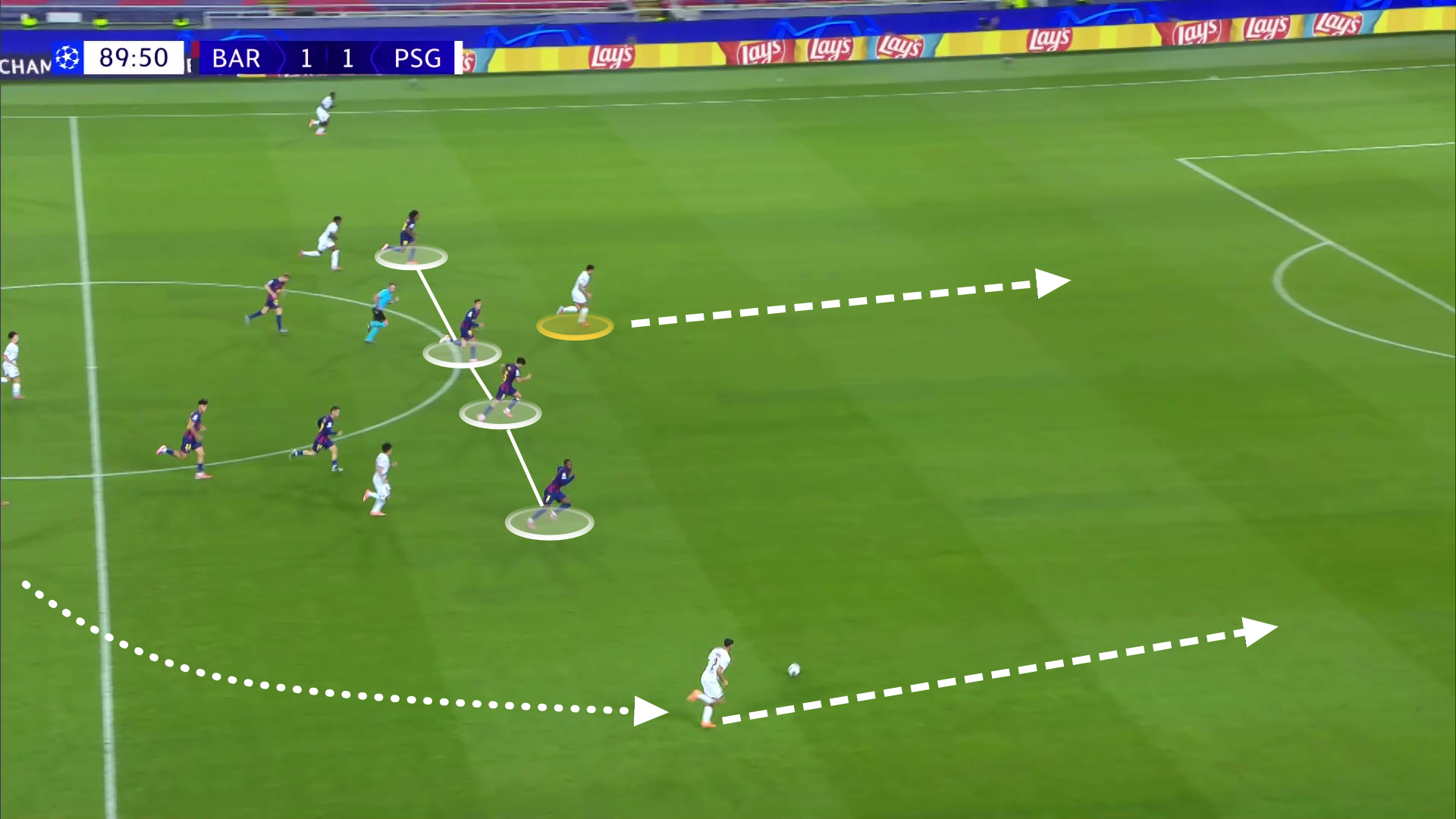
Hakimi has the pace to bring the ball past the defensive line which quickly ensures Ramos is onside
Getting back onside to score
With the tactic deployed, both strikers moved towards the back post rather than coming towards the ball, giving them time to move into an onside position as the wide players carried the ball up the pitch.
The central attacker’s positioning towards the back post allowed for the pass to be played into space for them to meet, with time for the pass to curl back towards them and away from the goalkeeper.
From their initial offside position, the strikers – now onside – were able to maintain an advantage in order to receive the ball uncontested for a clear sight of goal.
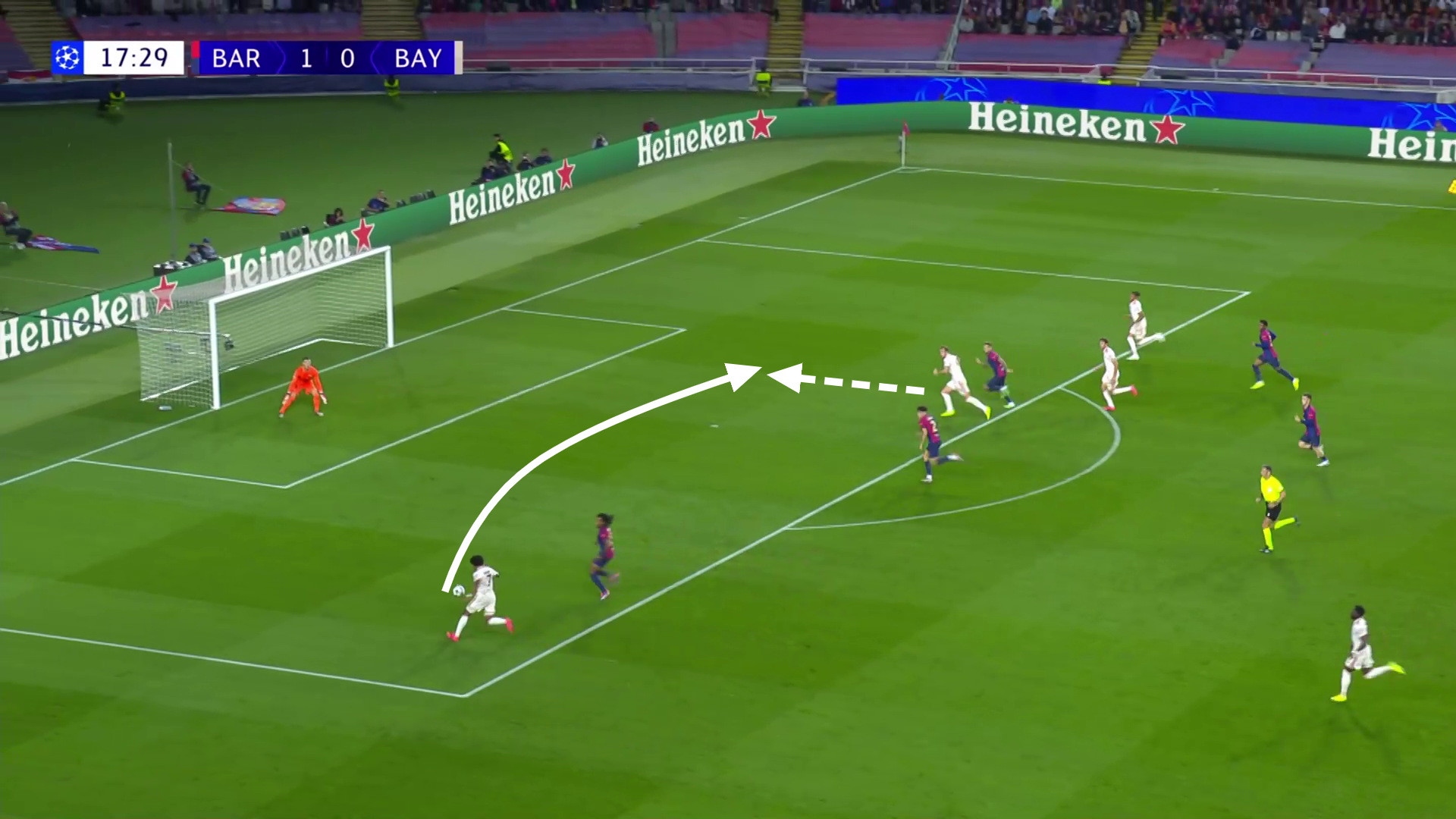
Gnabry assists Kane who arrives at the ball before any of the Barcelona defenders can get back
The similarities in both goals analysed are stark, but examples of this scheme have not been limited to these two games.
Concerningly, Barcelona have conceded similar chances against the likes of Levante, Rayo Vallecano and Sevilla in the league this season.
Sevilla beat Barcelona 4-1 on Sunday.
Given how effective the tactic has proven, it is likely more teams will begin to implement it, against Barcelona and teams who play with high lines in general.







